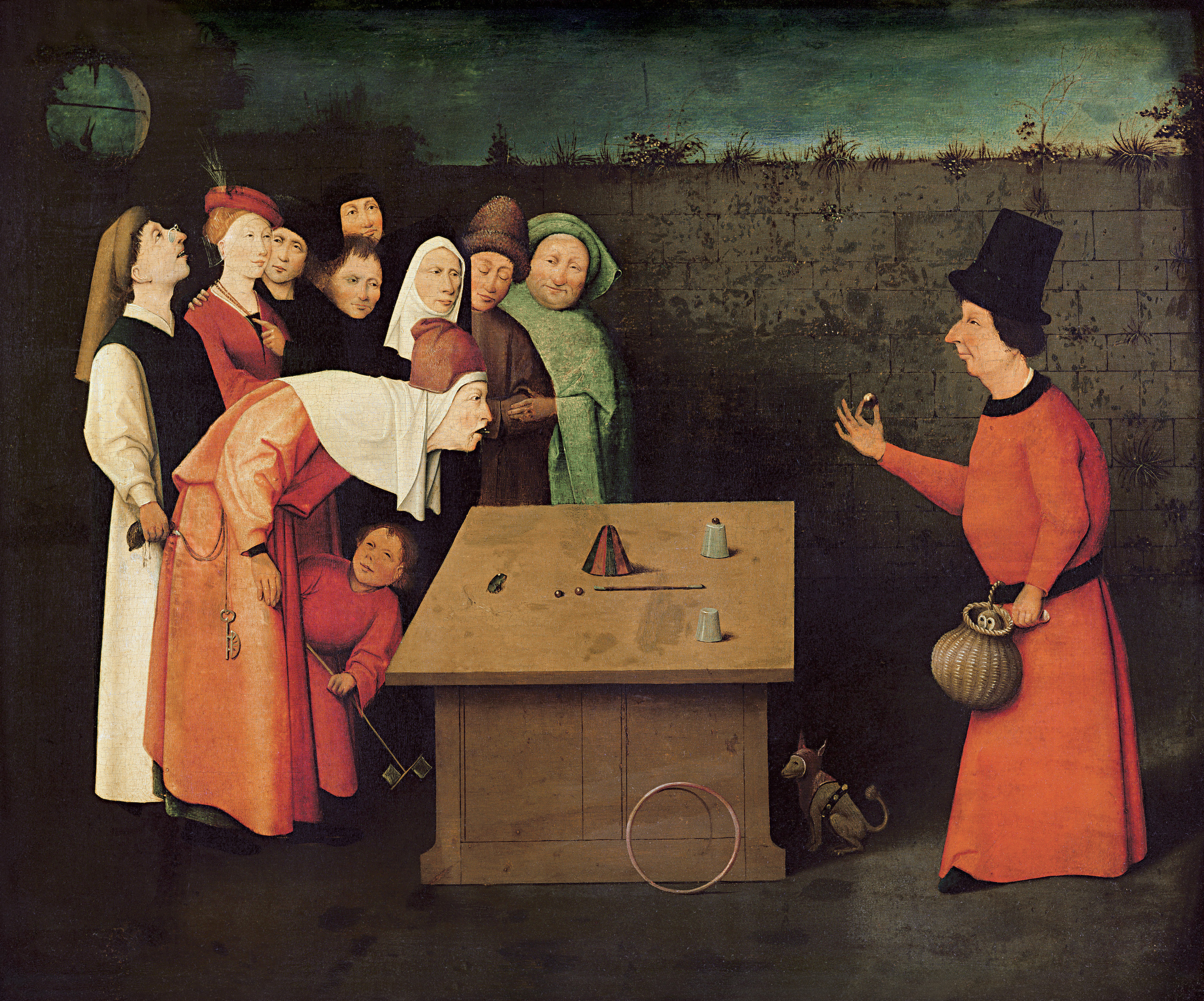There are five versions of this painting and one engraving, but most experts believe the most reliable copy is part of the collection of the Musée Municipal in St.-Germain-en-Laye, which is kept locked in a safe and loaned out on a limited basis.
Bosch depicts how people are fooled by a lack of alertness and insight, creating a spellbinding tension that reappears in his later paintings. The conjurer on the right of the image captures his apt and diverse audience with a game of cups and balls. The central character and true focus of the image is the man of rank in the forefront who leans in and is fixed on the pearl in the conjurer's hand while unaware of being relieved of his money purse. Bosch depicts the conjurer as a common criminal, luring in the prey.
The child engrossed in our victim and the man stealing the money purse seems to exemplify the Flemish proverb: "He who lets himself be fooled by conjuring tricks loses his money and becomes the laughing stock of children." Another Flemish proverb, published and widely distributed around 1480 in Bosch's hometown of 's-Hertogenbosch about the time of this painting, is: "No one is so much a fool as a willful fool."
Beasts are used in the painting to symbolize human traits that allow for deception and victimization. The little owl from the basket at the conjurer's waist signifies his intelligence. Frogs jumping out of the mouth of the central character represent the extent to which the victim let go of reason and gave in to bestial impulses.
Happy April Fools Day! :) Listen to butt music written by Hieronymus Bosch in The Garden of Earthly Delights!


 Hieronymus Bosch
Hieronymus Bosch